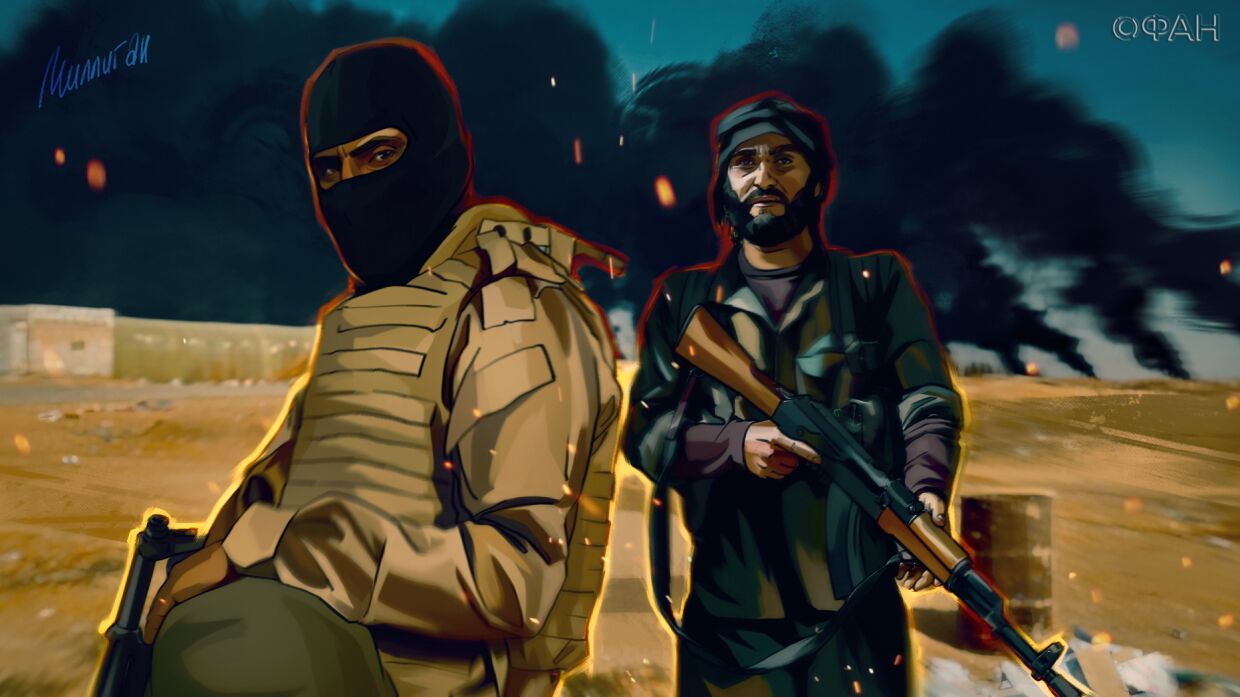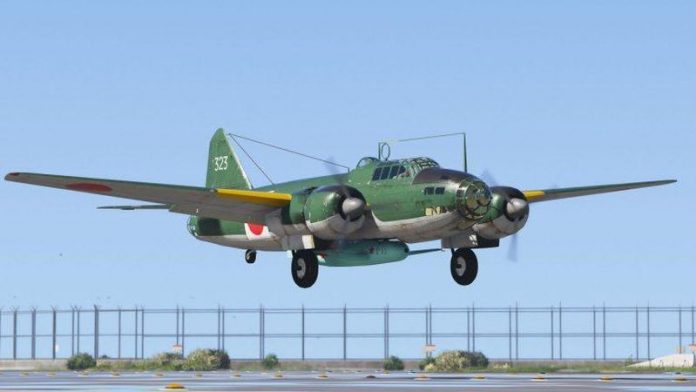
Here's what I'd like to start with: from the question. And the question is not easy., and golden. why are we, talking about airplanes, immediately draw in my head the image of a fighter, and with him a fighter pilot?
I.e, when we talk about the pilot-Hero, who immediately appears? Correctly, Pokryshkin or Kozhedub. Yes, rightly. But… Polbin, Senko, Taran, Plotnikov, Efremov? Few people know these names, Besides, probably, Polbina. Incidentally, all - Twice Heroes of the Soviet Union, bomber pilots. Pokryshkin had 650 departures, in Sen'ko - 430.
Pokryshkin did not allow Senko to shoot down enemy fighters, and Senko destroyed everything on earth, what could reach.
The bomber is an underestimated hero of that war. And now we'll talk about the plane, which looked like. Similar to those, that really destroyed everything, what could reach. And with just great performance.. And even though, who fought on the other side of the front.
But, how...
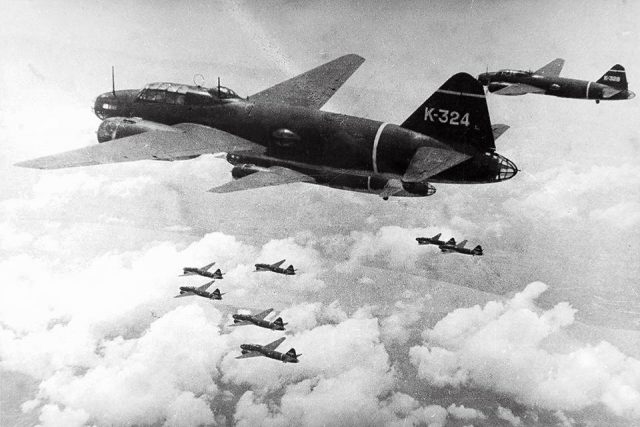
Begin. As always - such a small historical digression, and a little not even in the general timeline. But a very good example, how information received at the wrong time can lead to severe damage. or two.
But in our case - the beginning of a blitzkrieg, which has not yet been equal in history.
so, was on the calendar 2 December 1941 g. Only five days left before the terrible blow to the face of the US Navy at Pearl Harbor, before the invasion of Southeast Asia - six.
In Singapore, British bulwark in Asia, British Royal Navy's "Compound Z" arrives. It was the battleship "Prince of Wales", Cruiser Repulse, destroyers "Electra", "Express", "Tendos" and "Vampire".
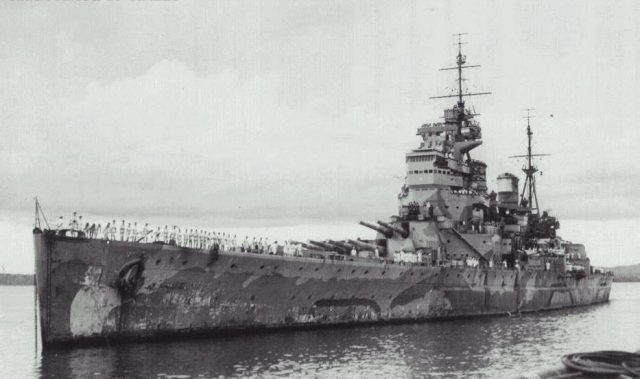 «Prince of Wales» in the harbor of Singapore
«Prince of Wales» in the harbor of Singapore
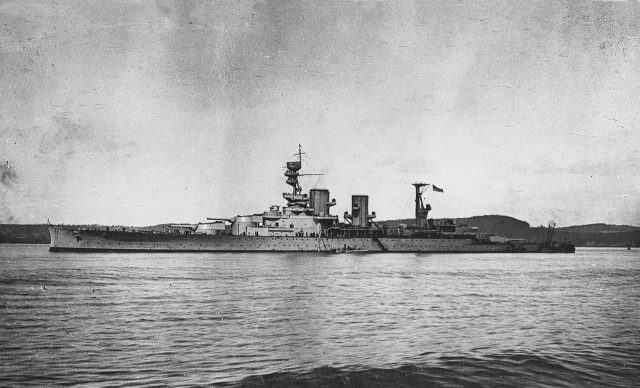 «Ripples»
«Ripples»
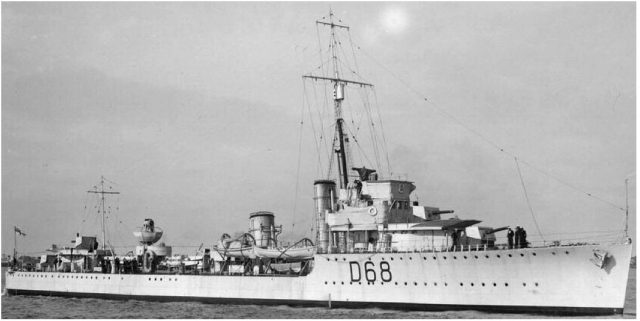 «A vampire»
«A vampire»
If with the first part (spacing at Pearl Harbor cabbage soup) the Japanese had no problems in theory, then with the second part of the plan there were.
The British navy is serious, the drowned Bismarck showed it to everyone in the world, that something had to be done with the frankly raider "Compound Z".
The Japanese did not just decide to take over Southeast Asia, the country needed resources. notoriously, that in Japan itself everything is sad with them. Where is the resource grab?, there is a need for their delivery. I.e, like everyone already knew, - sea convoys.
A new battleship with a battlecruiser is unpleasant. In the vastness of the Pacific or Indian Oceans, chasing them could be long and dreary, and such a raider gang could cause a lot of harm.
"Sweet couple" "Scharnhorst" and "Gneisenau" in December 1940 – March 1941 showed it well, drowning and capturing 22 vessels with a total tonnage under 150 thousand tons.
Therefore, the Japanese followed the British very closely., and in just five days, while the Americans were still smearing bloody snot on their faces, representatives of the "Mistress of the Seas" received their full program.
around noon 10 December 1941 Japanese planes caught British ships near Kuantan, on the east coast of Malaya.
The Prince of Wales received 2 torpedoes to port, and during the next attacks 4 to the right. After that, it remains to lightly beat him with 250-kg bombs and that's it, from the new battleship there were circles on the water and the memory of 513 dead sailors, including the commander of the formation, Admiral Philips.
At this, to tear apart the battleship, it took the Japanese an hour and a half.
"Ripals", which had a more experienced crew, at first he behaved well and dodged 15 (!!!) torpedo. However, 250-kg bombs did their job and immobilized the ship. After that, three torpedoes aboard - and the battlecruiser went after the battleship.
Destroyers got the role of extras and rescue ships.
And now let me introduce you to the participant of our story — Mitsubishi G4M, one of the best bombers of that war. At least, with indicators of harmfulness he is in full order.
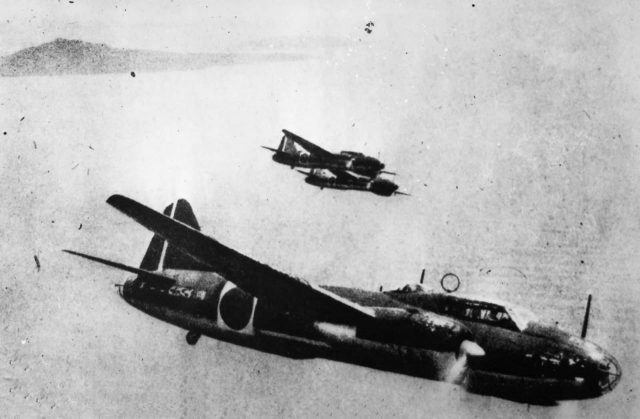
Japan ... Well, after all, the most unique country.
Only in Japan, long-range aviation was subordinate to the navy (IJNAF), not the army air force (FOR THE EYES). Furthermore, fleet aviation in Japan was definitely more advanced and progressive, better equipped and more qualified, than land.
It happened, that in the island empire the fleet came out on top and crushed a lot, including aircraft development, weapons and equipment.
The history of the appearance of our hero is closely connected with the wishes of naval commanders. Japanese naval commanders wanted to continue the theme of a very good aircraft "96 Rikko".
Here I must say, that "Rikko" is not a proper name, a abbreviator from «Rikujo kogeki-ki», i.e. "stormtrooper, basic model".
Generally, the fleet wanted such an attack aircraft, that everyone refused the tender, who could participate. Therefore, Mitsubishi was appointed to the role of the winner of the tender., which did a good job with the theme "96 Rikko".
And now you will understand, why the winner of the tender had to be appointed. When you see, what the new attack aircraft should have been in the opinion of the naval commanders:
— full speed: 215 knots (391 kmh) on high 3000 m.
— maximum range: 2600 nautical miles (4815 km).
— flight range with combat payload: 2000 nautical miles (3700 km).
— payload: essentially, the same, like "96 Rikko", 800 kg.
— crew: from 7 to 9 human.
— power point: two engines «Kinsei» capacity of 1000 HP.
What was the nightmare of the situation: with the same engines, and, pretty weak, the navy wanted to get a significant improvement in performance in terms of speed and range in comparison with the "96 Rikko".
Generally, everything was very, very difficult and looked somewhat doubtful, since it was hardly possible to improve aerodynamics so much. Yes, yet (naturally) distance should also be increased..
Generally, everything looked pretty badass.
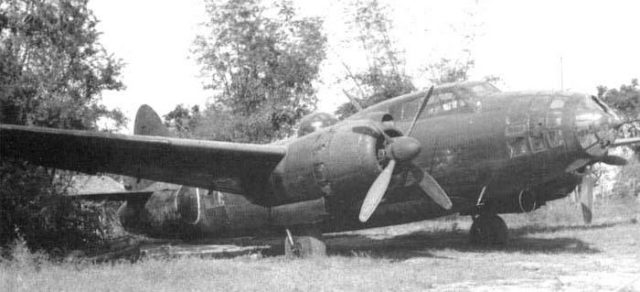
Plus, the cherry on the cake was a clear misunderstanding of, how this strange attack aircraft will be used in general, which was supposed to combine in itself and a bomber (not diving, thank God), and a torpedo boat. And in what direction to develop it. In bomber or torpedo.
I want to say, that in Mitsubishi they could either jump over themselves, whether souls were wholesaled to the devil, but the plane did not just turn out, and came out pretty good. And in fact, Mitsubishi engineers were able to realize all the semi-fantastic and not entirely justified requirements of the naval commanders.
At all, really the plane became just a masterpiece, the end of a huge amount of work.
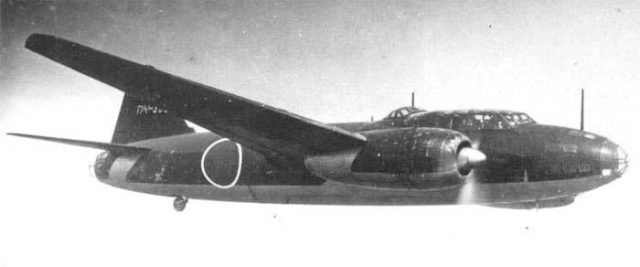
Aircraft designer was appointed, perhaps, most experienced in terms of multi-engine aircraft, Kiro Honjo. He immediately expressed his opinion, that the aircraft, in order to meet the requirements of the fleet, especially in terms of distance, must be four-engine.
The fleet very quickly hacked the project in the bud and categorically ordered the construction of a twin-engine aircraft.
can say, that this was a failed attempt to create a Japanese heavy four-engine bomber, the absence of which ultimately cost Japan dearly.
I took the liberty of expressing my opinion on the subject, that Japan was a very strange power. Achieving any goal regardless of losses is historically familiar to us, but still in Japan it was elevated to a cult. But this cult later sentenced, properly, all of Japan. But on this below.
And in fact, the fleet command set tasks for the designers, which the aircraft was supposed to carry out. And for the sake of fulfilling these tasks, everything was sacrificed., and aircraft survivability, and mass of combat load, and the lives of the crew were not taken into account at all. Well, it was typical for that Japan, although it would be appropriate for China.
the, that the navy allowed Honjo a small adventure with the replacement of a frankly weak, but officially approved Kinsei motor, for more powerful Kasei, which at that time were being developed by Mitsubishi, can be considered a huge victory.
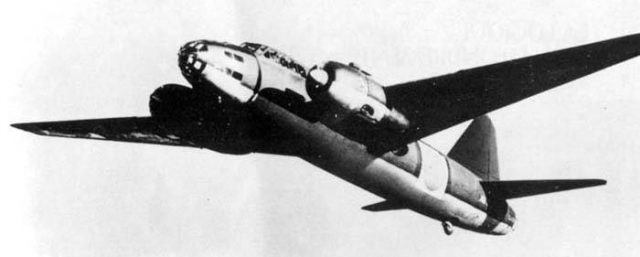
Kasei showed up on trials 1530 HP. against 1000 HP. the predecessor, and just promised a significant improvement in the characteristics of the future machine.
On the whole, things have progressed well., and the plane was ready to go into series, but something unexpected happened. In China, where the Japanese fought their Second World War, the command carried out a major operation, during which the fleet aviation suffered significant losses among the "96 Rikko". Aircraft were forced to operate beyond the range of fighters., and the Chinese, armed with American and Soviet-made fighters were quickly able to take advantage of this. The Japanese suffered simply stunning losses in aircraft.
Analysis of these losses showed, that the bombers were the first to die, at the edge of the group, since they were not covered by fire support from neighboring crews. It was then that the IJNAF command drew attention to the phenomenal data of the new experimental "1-Rikko".
And someone came up with a bright idea to turn the plane into an escort fighter. To mass-produce a new aircraft under the conditions of, that had to be compensated for the losses, incurred in China, it was difficult, therefore, it was decided to launch a limited edition version of the escort fighter based on the G4M1.
Mitsubishi management objected, but nonetheless, in a series (albeit limited) first went the escort fighter "12-Shi Rikujo Kogeki Ki Kai" (basic naval attack aircraft, modified) or short designation G6M1. The G6M1 differed from the basic design by the presence of a large gondola in place of the bomb bay with additional 20-mm cannons and partial protection of the fuel tanks..
The first two G6Ml were completed in August 1940 of the year, and, as predicted by Mitsubishi experts, the plane turned out to be a rare slag. The flight and tactical characteristics of the machine were badly affected due to the increased resistance, created by a massive gondola with cannons, Besides, as the fuel ran out in long-range raids, the centering of the aircraft changed very much.
Nevertheless, the Japanese constantly returned to this idea until the very end of the war. And in the army, and on fleets, almost every new bomber was tried to be upgraded into an escort flying cruiser. About the same success.
The miracle happened in the same year 1940, when flew (And How!) new carrier-based fighter "Mitsubishi" Type 0, aka A6M «King Sen», aka "Zero". The new fighter had phenomenal range and could escort bomber formations all the way through raids on Chinese cities.. And after the first battle with the participation of A6M 13 September 1940 under Chongqing, G6M1's career as an escort fighter is over.
All the same, the career of a bomber and torpedo bomber began.
They tried with all their might to turn the plane from the consequences of a strange TK from the naval command into a real combat vehicle.
Sounds weird for a Japanese car, but even attempts were made to increase the survivability of the new bomber. They tried to equip wing fuel tanks with a CO2 filling system, but, this idea was soon abandoned., due to its absolute inefficiency. The wing skin was the tank wall, because minimal damage could end in a fire show.
There were just terrible ideas, installation type on the lower outer surface of the wing rubber sheet thickness 30 mm. External ersatz protector reduced speed (on 10 kmh) and range (on 250 km), that's why they rejected it.
Additionally booked tail, by installing two armor plates with a thickness 5 mm on the sides of the tail gun. true, the purpose of the reservation was to protect not the shooter, and gun ammunition! But these plates couldn't even stop a rifle caliber bullet., and were filmed by technicians upon the arrival of the aircraft at the combat unit almost immediately.
Only in the latest version, G4M3, they still managed to do something in terms of protecting tanks (at least they stopped burning like matches), naturally, to the detriment of flight range. Well, once the head was removed, there's nothing to cry about your hair. And 1944 year (in a timely manner, true?) finally abandoned the 7.7 mm chirps, replacing them with 20 mm guns.
Nevertheless, despite all the ugliness, G4M turned out to be very versatile, fairly nimble and fast (for bomber) by air. And it is he who plays a huge role in supporting the Japanese blitzkrieg in the Asia-Pacific region..
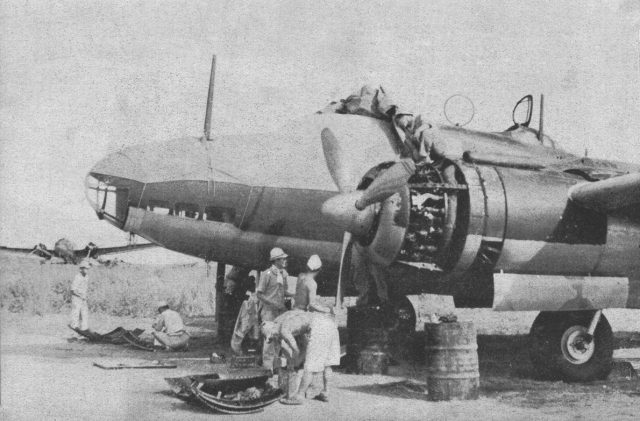
8 December Japan went to war with the United States and Great Britain. Yes, precisely the 8th, not the 7th, because even though the Japanese gave the Americans Pearl Harbor 7 December, but since Hawaii is on the other side of the International Date Line, then for Japan it has already come 8 December. fun fact.
Further, our hero, with the support of the same "Zero", smashed the American forces in the Philippines. They already knew about Pearl Harbor and were preparing to meet the Japanese, but they appeared during the change of flight units and, without encountering resistance, smashed to pieces half of the American aviation in the Philippines.
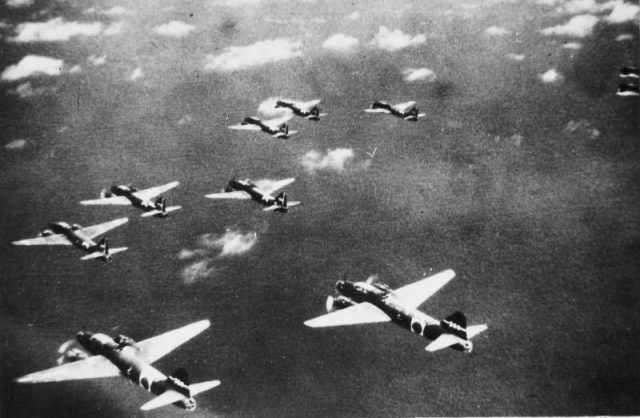
Next came the turn of the British. fun, but Japanese air reconnaissance made a mistake at first, mistaking two large tankers for battleships, stationed in the harbor of Singapore. But the radiogram from the I-65 submarine did its job and 10 December Britain also received its dose of humiliation. "Prince of Wales" and "Repulse" went to the bottom. Japanese losses were 4 Aircraft.
In battles, such a thing turned out, that the bomb-free "Type 1 Rikko "or G4M easily left the British" Hurricanes ".
As an assessment of the aircraft, I propose an excerpt from the memoirs of Lieutenant of the Japanese Naval Aviation Hajime Shudo:
«I always felt sorry for the guys from «Genzan» and «Salaries» every time, when we flew on joint missions with them. During the raids on Singapore, there was an idea, to meet over the target, so that our bombs fall at about the same time. But, departing from the same base, our «A type 1 Rikko» got there in three and a half hours, and the planes «Salaries» (G3M) appeared only an hour later after us.
Then the guys from «Salaries» began to take off much earlier than us. When, How did we get to our destination?, we chased them.
They had a hard time keeping 7500 m above sea level, while we easily flew on 8500. To go at the same speed, we were forced to zigzag.
Enemy fighters were afraid of our 20 mm tail guns and rarely attacked us.. If they did it, they only managed to make one pass, and then switched to «A type 96 Rikko», flying on 1000 meters lower and much slower. And tortured them...
Anti-aircraft guns also focused their fire on lower "Type 96 Rikko». Often we have long been eating ice cream at the base and relaxing, when the guys from «Salaries» returning home».
The most serious problem was the "Type 1 Rikko», and it was during the air campaign against Guadalcanal that the G4M earned its infamous nickname «Lighter».
Trying to somehow compensate for the vulnerability of their machines in the battles over Guadalcanal, G4M crews tried to climb as high as possible, where the actions of enemy anti-aircraft guns and fighters would not be so deadly effective.
but in general,, if you look at all this from the point of view of a normal person, it's not even about the problems of the aircraft. It's about people.
At the beginning, I promised to voice the reason for the defeat of Japanese aviation. And here it’s definitely not even the performance characteristics, Japanese aircraft had many advantages over American technology. And I'm just silent about the British.
Attitude towards death. Traditional national trait. Yes, strangely, of course, after all, the question of self-sacrifice unnecessarily was never part of the tactics or requirements of the command, especially in that war. But this Japanese tradition, which prescribed, that the surrender of a Japanese warrior is simply unthinkable - a barbaric anachronism, which simply bled the flying units.
Crews of downed aircraft, usually, preferred to die with their machines, rather than leaving the plane with a parachute with the prospect of being captured. Therefore, very often Japanese pilots simply refused parachutes, and in the thick of the battle, the often farewell salute from rocket launchers from the cockpit of a burning G4M was the last action of the seven-man crew.
stupid, of course. but the fact, even then, that Mitsubishi modernized the aircraft throughout the war, crew quality has steadily declined, and 1943 it became clear, that it won't be so good.
The Battle of Rennell Island became another page, which was written with G4M. fight night. Without the use of radar, which on Japanese aircraft was categorically a meager amount. Nevertheless, a successful night attack by Japanese aircraft had a demoralizing effect on the Americans and made it possible to evacuate Japanese units from the islands.
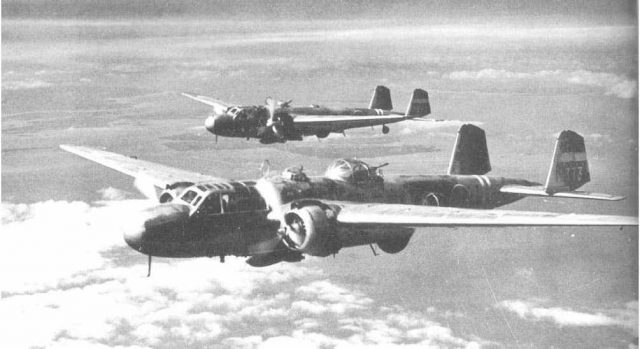
For experienced Japanese aircraft crews, night torpedo attacks were standard crew training., but the Americans were not ready to fight at night. As a result, the heavy cruiser "Chicago" went to the bottom, the destroyer "La Valetta" was able to save.
At Rennell Island, the IJNAF demonstrated, that may still pose a threat, but in fact this battle was the last, in which G4M achieved significant success with moderate losses. Then the sunset of Japanese naval aviation began, mainly due to, what are they, unlike opponents., failed to adequately compensate for losses in crews.
It was on board the G4M that Admiral Yamamoto set off on his last flight..
TO 1944 it became clear, what all, G4M is already hopelessly outdated. And a successor began to arrive to replace him, fast basic dive bomber «Ginga» («Milky Way»), P1Y1, nicknamed by the allies «Francis».
And the G4Ms of various modifications remaining in a fairly large number switched to night work and patrol functions..
And the last task of G4M in the war. 19 August Lieutenant Den Shudo on G4M delivered the Japanese delegation to the surrender negotiations. At the request of the Americans, the plane was painted white and applied green crosses.
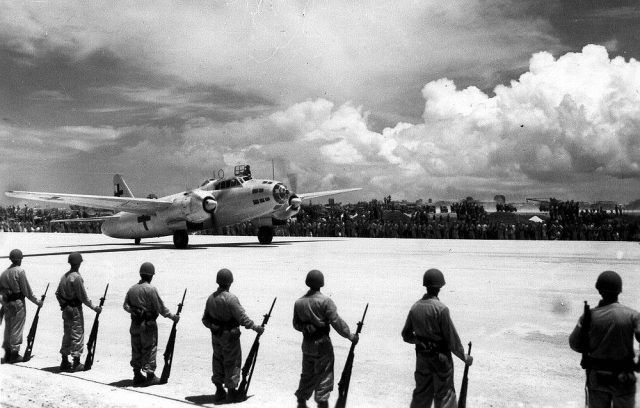
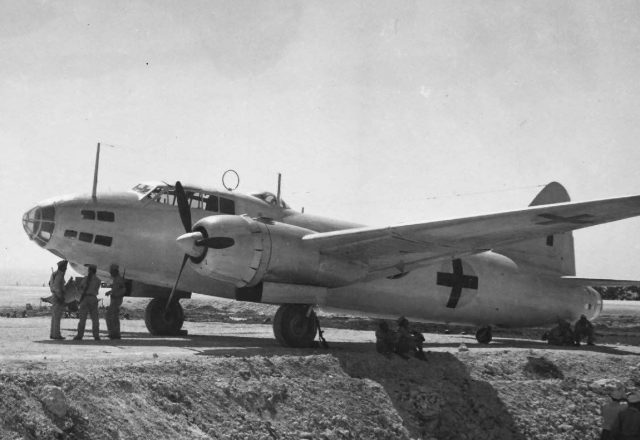
The plane went through the whole war. By Japanese standards, it was a very advanced aircraft with good performance.. Good maneuverability, good speed for its time, even the armament was quite remarkable compared to colleagues.
Small defensive armament consisted of four machine guns of caliber 7,69 mm and caliber guns 20 mm. A plus (where else will you find this!) two more spare machine guns!
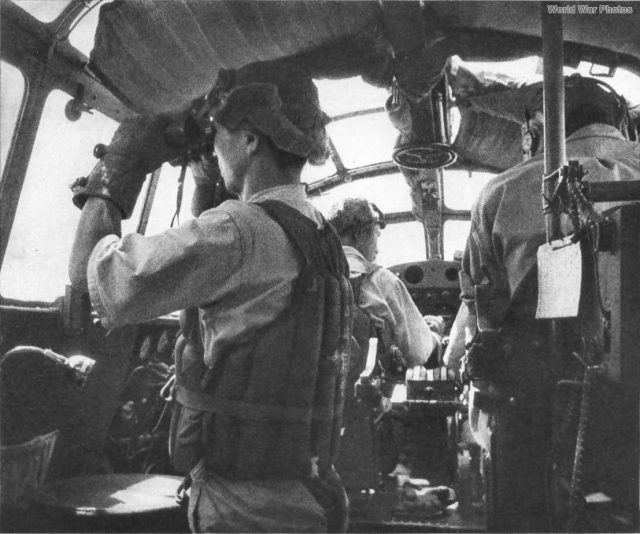
Machine guns were placed in the navigator's cabin, top blisters and two side blisters.
Marine Type Machine Gun 92 submitted a copy (not very good, otherwise why spare) English machine gun «Vikkers» of the same caliber and were equipped with disc magazines with a capacity of 97 rounds (stores could also be used 47 rounds). Ammunition - seven magazines.
The blister of the upper shooting point consisted of a front fairing and a rear movable part. Before firing, the rear part was rotated around the longitudinal axis, and she retracted under the machine gun. The machine gun could be thrown from one side to another. Ammunition - seven disk magazines 97 rounds in each.
rifle «Megumi» Special Marine Type 99 model 1, located at the tail of the aircraft. It was attached to a special swinging installation., allowing to stabilize the barrel in a vertical plane. At the same time, this installation, together with the transparent tail fairing, could manually rotate around the longitudinal axis.. Ammunition - eight drums 45 shells in each was placed on the right behind the shooter and was fed to him along a special conveyor belt.
Characteristics of the Mitsubishi G4M2 modification:
Wingspan, m: 24,90
Length, m: 19,62
Height, m: 6,00
wing area, m2: 78,125
Weight, kg
- empty aircraft: 8 160
- normal take-off: 12 500
Engine: 2 x Mitsubishi MK4R Kasei -21 x 1800 HP.
full speed, kmh: 430
Cruising speed, kmh: 310
practical range, km: 6 000
Skoropodъёmnost, m / min: 265
Service ceiling, m: 8 950
Crew, pers.: 7.
weaponry:
- one 20 mm cannon type 99 model 1 in the tail tower;
- one 20 mm cannon in the upper turret (7,7-mm machine gun type 92 on G4M1);
- two 7.7 mm machine guns in side blisters;
- two (one) 7,7-mm machine gun in nose mount;
- to 2200 kg bomb (torpedo) loads.
The total output of the G4M bomber is estimated at 2435 pcs.
One of the most successful strike aircraft of World War II. Of course, if you count real victories and achievements, and not bombed into rubble of the city. But we won't point fingers at Lancasters and B-17s., but just note, what, no matter what, G4M turned out to be a very useful combat vehicle.
/Roman Skomorokhov, topwar.ru/








